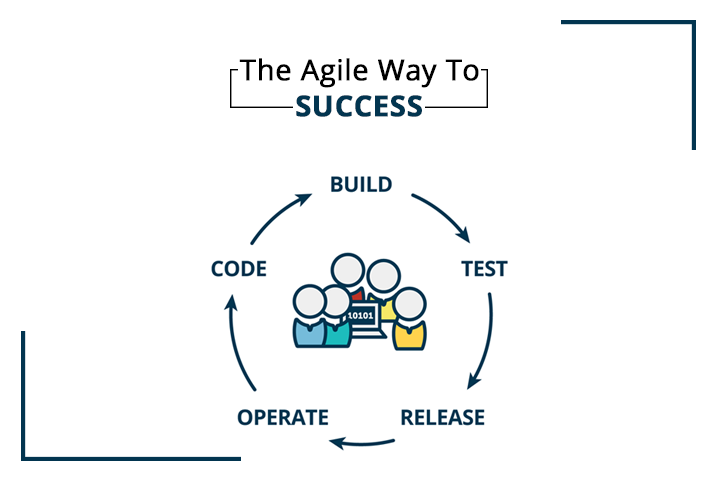In the digital landscape where change is the only constant, Agile offers a dynamic work process that helps to keep up with fast-paced customer needs while at the same time keeping an eye on the penultimate goal of delivering a successful product.
The Agile methodology was introduced at the onset of the new millennium against the backdrop of increasing demand for a move away from long-practiced static development methodology for a more collaborative and dynamic methodology promoting greater cross-functional collaboration among project participants including stakeholders for greater speed, flexibility, and customer-eccentricity during the product development phase.
Agile Vs Traditional
The traditional model or the “waterfall model” (as it is popularly referred to) is a 5 step sequential process (documentation, design, implementation, testing, and maintenance) with a greater focus on project progress than the end-product value.
The Agile process, on the other hand, is aimed primarily at delivering best in the class frequently revisable software solutions that add incremental value to the product or service while minimizing project overheads throughout the development cycle.
In layman’s terms, the agile product development methodology is aimed at delivering successful products rather than delivering products successfully. Here’s how adopting agile methodology during project development can help you deliver successful products.
Real-Time Feedback: Unlike the rigid sequential product development methodology, in agile the development team develops, releases and tastes multiple working iterations of the project. Based on the feedback, necessary changes are implemented to arrive at the most refined final solution. A greater emphasis is paid on individuals and interaction rather than on process, documentation, and tools. Collaboration for innovation remains the driving force behind each iteration during the project development cycle.
Flexible: The agile process focuses on collaboration over detailed documentation. This renders flexibility to the development process. The process identifies impending project roadblocks early and accordingly keeps solutions in line. Also, the traditional or waterfall process was allergic to change. It struck to the documentation roadmap agreed upon on the first place. While this had little impact on the final product, it, however, closed all doors for possibilities in making the product better and more valuable.
The Agile Process, on the other hand, employs the MoSCoW rule (must have, should have, could have and won’t have time now) to identify and prioritize product feature list much more efficiently for timely, realistic and relevant product delivery. It is like putting greater emphasis on dynamically incorporating intrinsically valuable changes over sticking to a static fixed plan.
Customer Over Contract: In the waterfall development process, the priority is the contract. Customers only involvement apart from the beginning and end of the project was once during the project duration for updating contract agreements if there were any. The development also followed a linear single lane contract-focussed approach.
The agile approach puts customer ahead of contract with a greater focus on increasing business value. Also, a greater emphasis is on developing product features that deliver particularly on the needs and wants of the customer.
Minimum Risk Approach: The much talked about CHAOS Report of 2000 by Standish Group states that nearly a quarter of the software projects fail to deliver on their initial documented purpose and hence canceled. This is not the case in the iterative and incremental Agile development methodology.
The very objective of each sprint and iteration is to have a working end-product. This lends following key advantages to stakeholders, developers and project managers.
- Minimum Up-Front Cost as the first sprint focuses on the MVP and then keeps reiterating the entire process for future development.
- Greater Freedom and Adaptability to frequent changes as per customer and stakeholder feedback.
- Each feature is a valuable component in itself and inline with customer needs and preferences.
Least Effort Maximum Value: Timely feedback coupled with a visualization of its impact on end-product-value better equips the engineering process the intrinsic product values. This brings efficiency with effectiveness in product value. On a larger scale. The agile development methodology gains a much desired competitive advantage with streamlined end-user responsiveness.
Conclusion
Agile methodology helps to realize end-product faster for immediate benefits as well as outpacing the existing competition. With the ability to rope in late changes and product updates with ease, enterprises can better focus on delivering product features that customers really want. We at Pratham offer best in the industry agile co-development solutions that unite interdisciplinary teams in iterative cycles for delivering a cost-effective software solution that focus primarily on increasing productivity. Read more about our services at https://www.thepsi.com/.









